Health is wealth, eat well to live well.
Join my community and receive my free ebook! Subscribe now >>
Decoding Diet Myths | Making Sense Of Health Hypes!
High Blood Pressure Wellness Lifestyle Podcast, Episode #52
Decoding diet myths to make sense of health hypes is explained within this podcast page. Where we’ll delve deep into the core of some popular dietary trends and statements, critically examining the science (or lack thereof) behind each fad to separate fact from fiction, and ultimately empowering you with knowledge to make informed nutritional choices aligned with your health goals.
In today's hyper-connected world, diet advice is as pervasive as it is perplexing, with new trends constantly emerging and conflicting with established norms. From carb-cutting keto enthusiasts to the staunch advocates of plant-based living, the stream of dietary dos and don’ts can seem endless. This I know for sure from my own experience.
So, let’s get started on uncovering the truth with 'Decoding Diet Myths', reviewing the science to understand what are the truths, what really works for your health and wellness!
Mentioned In This Episode
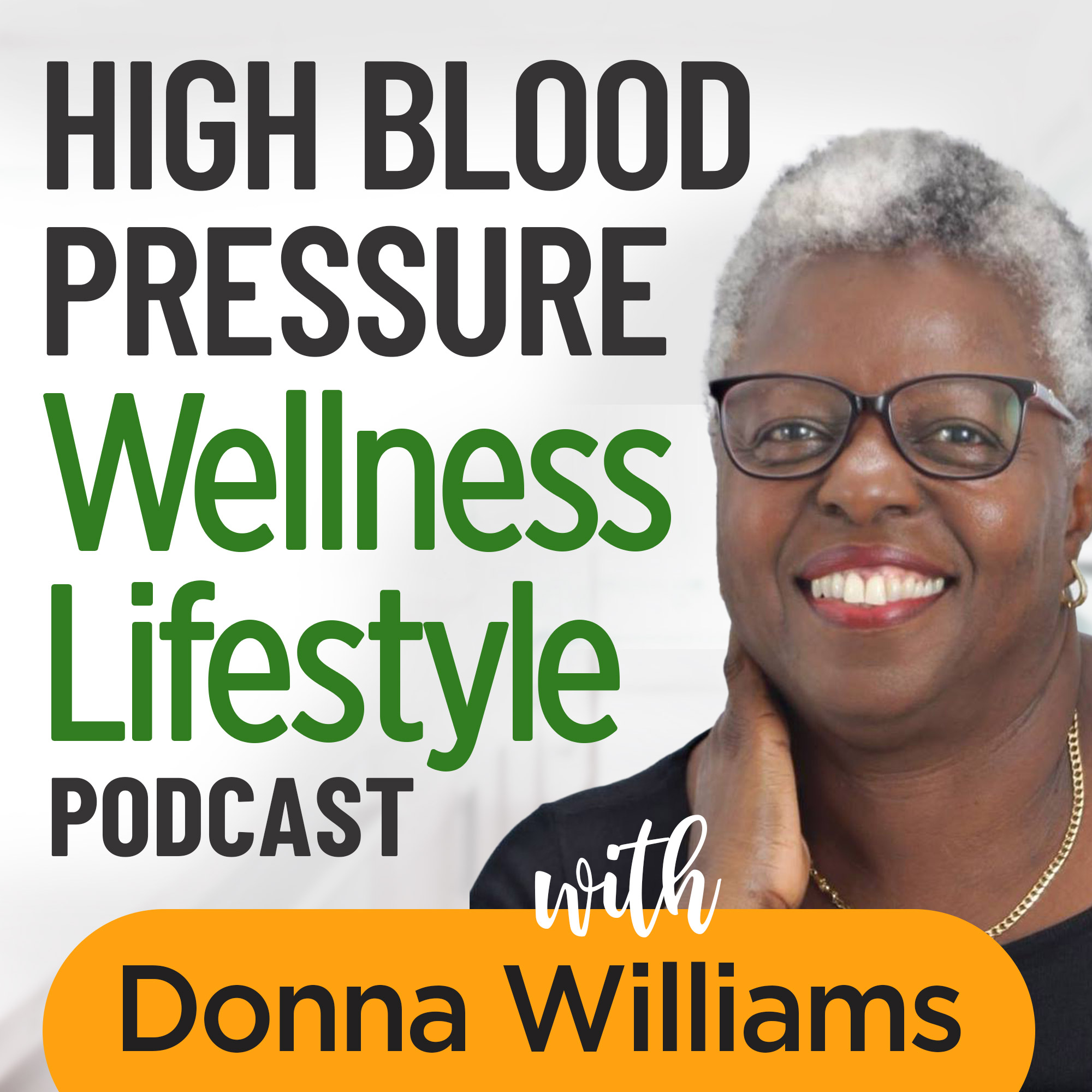
- Finding your healthy balance is possible with Overcome High Blood Pressure Eat Your Way To A Healthier Heart In 6 Weeks. If you’ve ever felt overwhelmed by generic health advice that doesn’t take into account your culture or the flavors you love, this is the program for you. Together, we'll embark on a journey of transformation that respects your taste buds and heritage, turning every meal into an opportunity for wellness and empowerment. Join us to not just lower your blood pressure naturally, but to revitalize your life, one delicious bite at a time!
Subscribe To These Episodes
Apple Listen on Apple Podcasts Spotify Listen on Spotify YouTube Listen to High Blood Pressure Wellness Lifestyle Podcast RecordingsDecoding Diet Myths: Making Sense of Health Hypes Podcast Transcript!
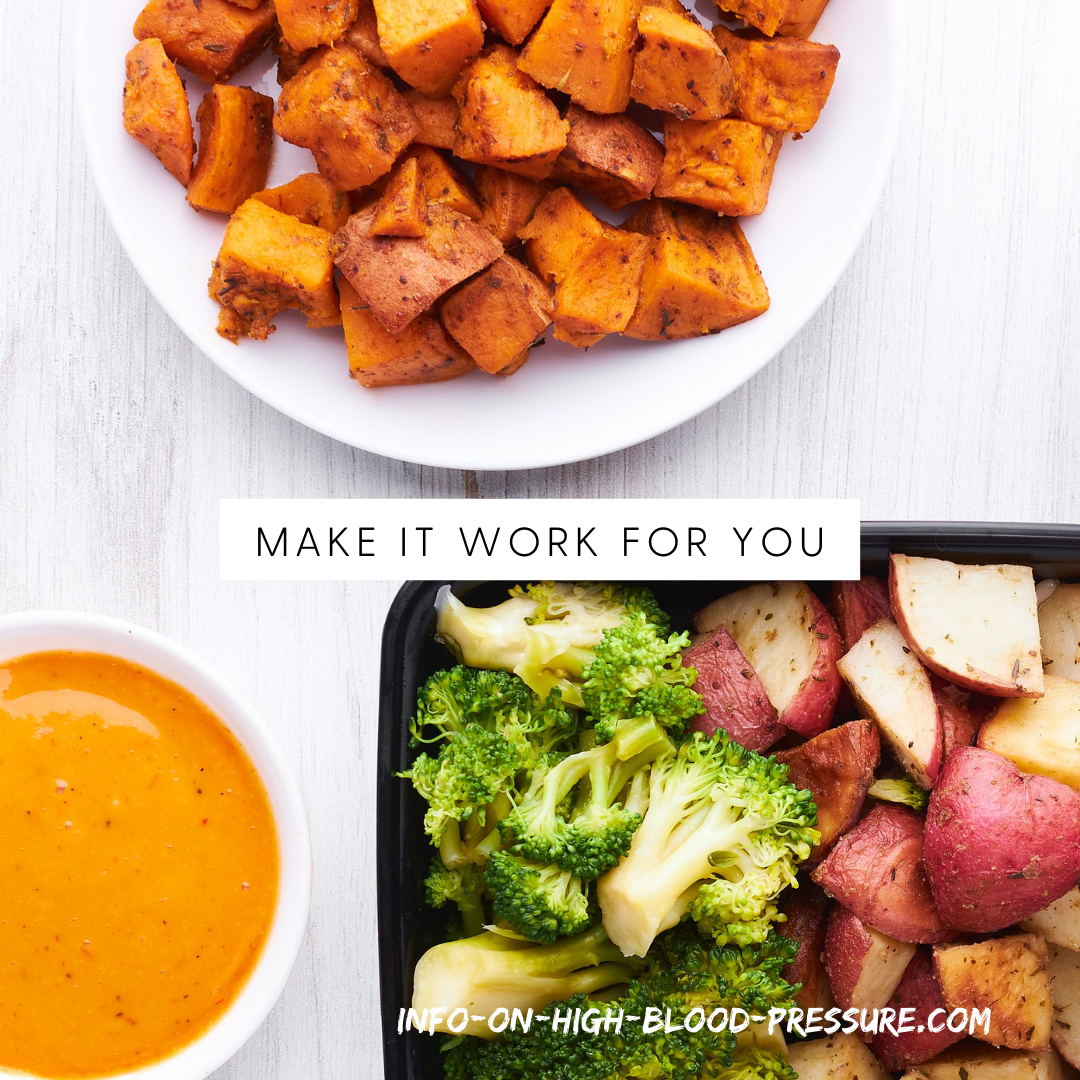
Eat more fat; eat less fat. Cut carbohydrates from your diet; eat carbohydrates but only at certain times. Artificial sweeteners are a great alternative; artificial sweeteners wreak havoc on your gut. Do any of this sound familiar to you? When it comes to making decisions about your health, there’s often a lot of conflicting and confusing information.
Welcome to the High Blood Pressure Wellness Lifestyle Podcast, where your journey toward a healthier, more vibrant life takes center stage. I'm Donna Williams, your host and guide, Certified Holistic Health Coach, and passionate advocate for transforming lives through mindful, practical approaches to health.
At my digital home, info-on-high-blood-pressure.com, and through this podcast, I'm here to serve a vibrant community, especially focusing on women of color, by demystifying chronic disease management, starting with high blood pressure.
Each episode dives deep into tailor-made strategies from my personalized coaching and online courses, highlighting not just what you should eat but how you should think about food and lifestyle management to revitalize every aspect of your health. We’ll explore the power of mindful eating, a transformative approach that will forever change your relationship with food and show you how to control your blood sugar with confidence and ease.
Together, we'll embark on a transformative journey, reshaping our lives from reactive health measures to proactive health empowerment. It's more than modifying a diet or changing a routine; it's about making wellness your daily mantra and experiencing a full transformation.
So, buckle up, and let’s turn the tide on high blood pressure together, making wellness not just an occasional thought but a vibrant, unavoidable way of life!
Join me, Donna Williams, and listen in as we unlock the secrets to sustainable health, one powerful step at a time. Let’s get started!
Deciphering Health Hypes
You may be wondering, “How do I cut through all the noise to make healthy decisions that are right for me?” If you’re a Health Coach, you might also ask, “If I can’t decipher this for myself, how can I possibly do it for clients?”

I embrace bio-individuality - I learned this term at my certification school. My understanding of it is the unique concept that you are the only version of you and what works for you won’t work for everyone else. You see, it applies to everything - from the environment you thrive in, to the relationships that nourish you, to the food you eat (or don’t eat!).
Today within the decoding diet myths that's in our mind we're going to explore these decoding diet myths to unravel nutritional fact from fad fiction. Let us empower your health choices with proven insights found here!
Actionable Steps In Decoding Diet Myths!
Here are three nutrition tips that everyone can benefit from, regardless of their bio-individuality:
- Eat more vegetables: Dark, leafy greens, in particular, pack a powerful punch, and research links consumption to sharper memory and slower rates of cognitive decline. They’re also packed with fat-soluble vitamins, like vitamins E and K, and folate, which is imperative for keeping inflammation at bay.
But do you know that it wasn't until the first Africans arrived in North America in the early 1600s that America got its first real tastes of dark green leafy vegetables, which they grew for themselves and their families.
So, over the years, cooked greens developed into a traditional African American food. Ultimately, they became essential in Southern regional diets and are now enjoyed nationwide.
As a bio-individual, experiment with raw and cooked vegetables, some people may experience digestive discomfort when eating raw vegetables, especially kale and other leafy greens. To avoid digestive distress and ensure you’re absorbing available fat-soluble vitamins, sauté kale in olive oil. If your digestion can tolerate raw greens, go for it! Top a big leafy salad with a simple dressing of extra-virgin olive oil, chopped garlic, and lemon juice, munch on spiralize raw zucchini and drizzle it with pesto! You can also create delicious salads with cooked vegetables, for example, roasted fennel or carrots.
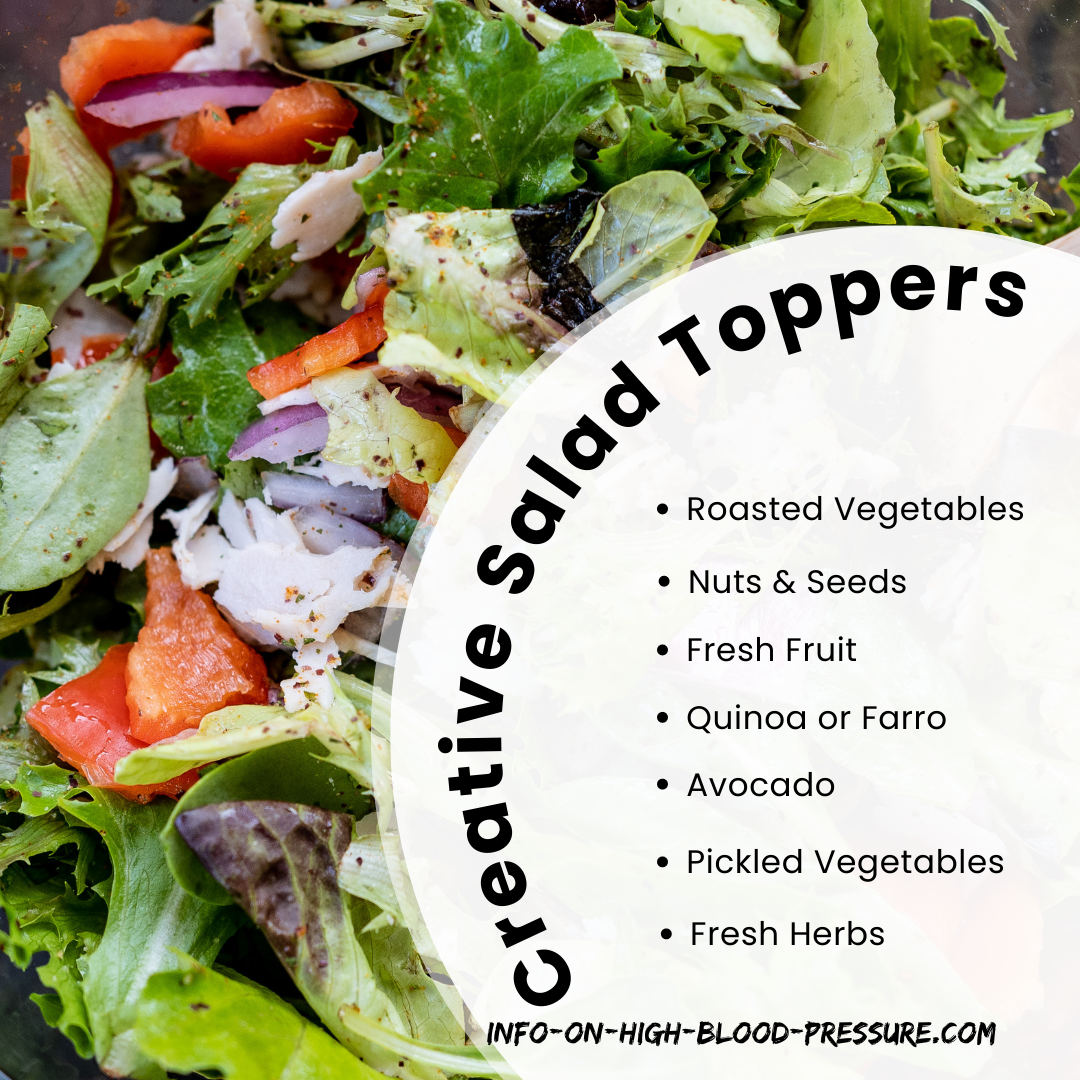
- Limit refined sugar: From an evolutionary standpoint, our bodies are built to crave sugar found in nature, such as whole fruit and honey. However, our bodies have also been programmed to store this sugar as fat, since sugar was only available in the summer months and our bodies had to prepare for a long winter ahead with limited calories.
In modern times, we’ve become inundated with sugar in the form of processed foods, and our bodies are not equipped to handle it. This can result in additional fat storage and contribute to diabetes and obesity.
Limiting your consumption of refined sugar is a good place to start, but it requires being mindful of ingredients of hidden sugars. Hidden sugars appear in everything from yogurt to salad dressing to protein bars.
The American Heart Association recommends that women consume no more than 25 grams of sugar a day, and men have no more than 37.5 grams. According to the FDA, 13% of the calories consumed by the average American come from added sugars.
This extra sugar may be adding to your waistline as well as putting your heart at risk. Research shows that excess sugar consumption can be associated with an increased risk of cardiovascular disease.
The American Heart Association recommends limiting added sugar consumption to 25 grams (about six teaspoons) per day for women and 36 grams (nine teaspoons) per day for men. Knowing where sugar may be hiding can help you meet these goals and beat added sugar at its game of hide and seek. So, are you skipping cookies, cake or other sweet treats to reduce your sugar intake? Give yourself an A for effort, but in today’s world you’re probably still eating more sugar than you realize. To identify added sugars, look at the ingredients list. Some major clues that an ingredient is an added sugar include: - it has syrup (examples: corn syrup, rice syrup) - the word ends in “ose” (examples: fructose, sucrose, maltose, dextrose) - “sugar” is in the name (examples: raw sugar, cane sugar, brown sugar, confectionary sugar) - Other examples of added sugar include fruit nectars, concentrates of juices, honey, agave and molasses. Applesauce: Standard applesauce adds loads of sugar to sweeten it up. A small container might have 22 grams. So, I’m encouraging you to buy the unflavored, unsweetened versions and enjoy what apples truly taste like. "No Sugar Added" Foods: Believe that with a grain of salt. Many products will use fruit juice from concentrate to sweeten, but that's still a form of added sugar. Crackers: The sweet stuff even finds its way into savory items. When you buy a box, make sure there are less than 4 grams of sugar per serving. Smoothies: Though they're made with fruit, smoothies can also contain fruit juice, sherbet, ice cream or flavored syrups. Even the fruit-and-veggie-only ones can include up to 60 grams of sugar per serving. You're better off biting into a piece of the real thing. Alcohol Mixers: These are similar to smoothies, imagine that, considering there can be 50 to 60 grams of sugar in a 12-ounce margarita. You may even reach for more than one when you're out to dinner. A single glass of wine or a seltzer plus a shot of alcohol is a better option. Nut Butter: Read the ingredients: Does yours say "cane sugar, "honey" or even "corn syrup"? Opt for natural brands made only with nuts. Instant Oatmeal: Instant packets are convenient, but one serving of flavored oats may have 4 teaspoons of sugar — probably way more than you'd add on your own. Buy unsweetened kinds and add fruit and spices for a flavor boost. Jam: You know that jams and jelly taste sweet, but they can also get you because they look like fruit! Add a hit of sweetness to toast by topping it with real berries. Granola Bars: The word granola still gets a health halo, but since so many are made with added sugar and chocolate, it's basically dessert, if you ask me. Dried Fruit: As if nature's candy wasn't sweet enough, sometimes dried fruit contains added sugar. Look for unsweetened varieties when possible. Coffee Drinks: Flavored versions pack upwards of 12 grams of added sugar in 12 ounces, half of what the American Heart Association recommends you have in an entire day — and that's just your morning cup! Skip the sweetener and use cinnamon and nutmeg to flavor instead. Sauces: Barbecue, ketchup and teriyaki sauce are just a few examples where the sweet stuff slyly hides. One look at the ingredients and you might find sugar, honey, agave or corn syrup in the mix. Non-Dairy Milk: Soy, almond, rice or cashew milks can contain 10 grams of sugar, even if you enjoy flavors like vanilla. Look for unsweetened versions without sugar added. Bread: I love bread and am not giving it up. There may be as much as 6 grams of sugar per slice. Considering you probably use two slices for a sandwich, this can add up. Choose those with 2 grams of sugar per slice or less. Bottled Flavored Water: Just because the labels have pictures of coconuts or watermelons doesn't mean they're made with fruit. One cup might have as much as 3 teaspoons of sugar. Try a sparkling water (without added sugar) and add your own fruit slices. Bottled Tea: It's one of the healthiest drinks in the world, as long as you don't add copious amounts of sugar to mask the bitterness. I do enjoy the bitterish taste. With some topping 30 grams per serving, make sure to buy unsweetened versions.
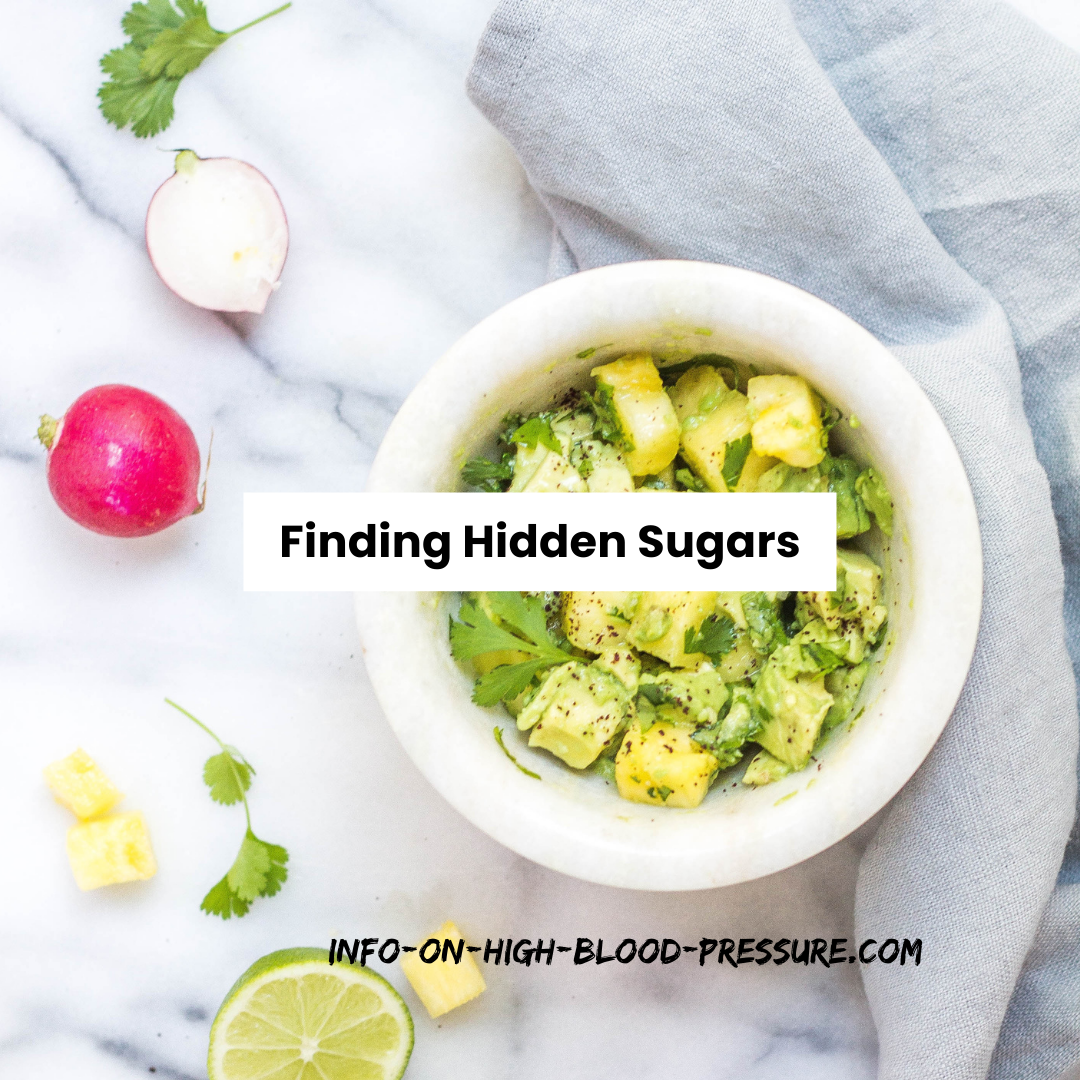 Salad Dressing: Would you like some sugar with your greens? Some bottled dressings start at 20 grams of sugar for a 1-ounce serving. Yikes! I add grated fresh carrots that I sprinkle on top, or add some dried cranberries, or raisins. I suggest taking two minutes to whip up your own salad dressings at home from olive oil, garlic, herbs and vinegar. Marinade: Just like sauces, marinades also pack a ton of sugar. Some have 3 grams in a tiny tablespoon serving. You can make your own just like you would with salad dressing: some oil, lemon juice, herbs and spices. Tonic Water: If you're ordering a vodka tonic to avoid a sugary mixed drink, you'll be disappointed to know that a 12-ounce serving has 8 teaspoons of sugar. I recommend requesting club soda or seltzer as your mixer of choice. Tomato Sauce: Many tomato products add sugar to sweeten the deal. You're better off using fresh, whole tomatoes and flavoring on your own with salt, pepper, onion and garlic. As a bio-individual, learn how sugar – both natural and artificial – affects you. That's truly being active in decoding diet myths! I think most types of sugar will spike your blood sugar, but some people may be more sensitive than others. For example, some people are affected by the natural sugar found in fruit. Trying an elimination diet can help you tune in to this. Remove fruits that you think might negatively impact how you feel, record how you feel in a food journal, and reintroduce the fruit(s) to figure out if you might want to avoid it in general, eat it occasionally, or continue eating it as often as you want. At its core, an elimination diet can help you get the most out of your health goals by identifying the foods that work for you and your body’s needs. When you eliminate the foods that cause a bad reaction in your body, you find you have more energy, you gain clarity and a more focused approach towards life - at least as far as I have experienced whenever I detox.
Salad Dressing: Would you like some sugar with your greens? Some bottled dressings start at 20 grams of sugar for a 1-ounce serving. Yikes! I add grated fresh carrots that I sprinkle on top, or add some dried cranberries, or raisins. I suggest taking two minutes to whip up your own salad dressings at home from olive oil, garlic, herbs and vinegar. Marinade: Just like sauces, marinades also pack a ton of sugar. Some have 3 grams in a tiny tablespoon serving. You can make your own just like you would with salad dressing: some oil, lemon juice, herbs and spices. Tonic Water: If you're ordering a vodka tonic to avoid a sugary mixed drink, you'll be disappointed to know that a 12-ounce serving has 8 teaspoons of sugar. I recommend requesting club soda or seltzer as your mixer of choice. Tomato Sauce: Many tomato products add sugar to sweeten the deal. You're better off using fresh, whole tomatoes and flavoring on your own with salt, pepper, onion and garlic. As a bio-individual, learn how sugar – both natural and artificial – affects you. That's truly being active in decoding diet myths! I think most types of sugar will spike your blood sugar, but some people may be more sensitive than others. For example, some people are affected by the natural sugar found in fruit. Trying an elimination diet can help you tune in to this. Remove fruits that you think might negatively impact how you feel, record how you feel in a food journal, and reintroduce the fruit(s) to figure out if you might want to avoid it in general, eat it occasionally, or continue eating it as often as you want. At its core, an elimination diet can help you get the most out of your health goals by identifying the foods that work for you and your body’s needs. When you eliminate the foods that cause a bad reaction in your body, you find you have more energy, you gain clarity and a more focused approach towards life - at least as far as I have experienced whenever I detox.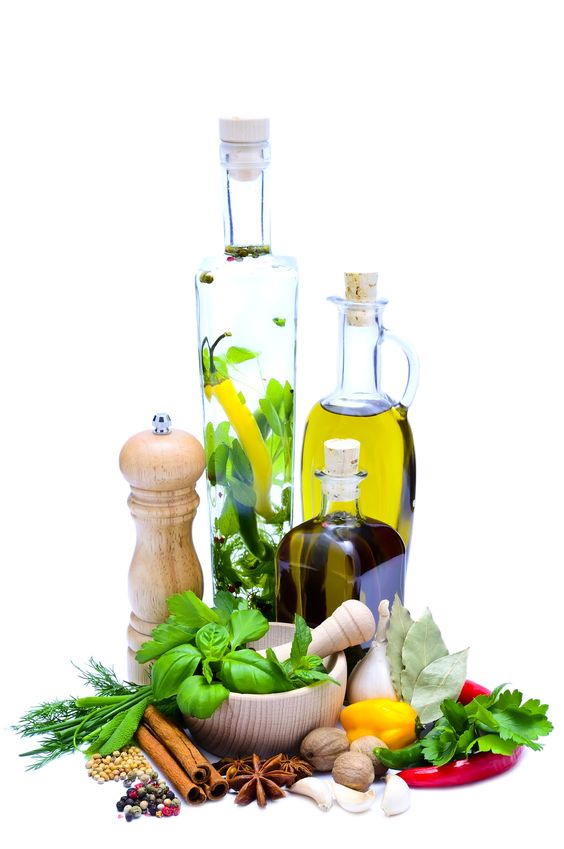
- Finally, make sure the fats you’re eating are health-supporting fats: Remember at the start of this podcast I said…Eat more fat; eat less fat. Cut carbohydrates from your diet; eat carbohydrates but only at certain times. Artificial sweeteners are a great alternative; artificial sweeteners wreak havoc on your gut.
Well, for years, fat was a four-letter word. We were urged to banish it from our diets whenever possible. We switched to low-fat foods. But the shift didn't make us healthier, probably because we cut back on healthy fats as well as harmful ones. Let's clear up the confusion and look closely at fats, by decoding diet myths by identifying the ones we need, the ones to avoid, and where to find them. You may wonder isn't fat bad for you, but your body needs some fat from food. It's a major source of energy. It helps you absorb some vitamins and minerals. Fat is needed to build cell membranes, the vital exterior of each cell, and the sheaths surrounding nerves. It is essential for blood clotting, muscle movement, and inflammation. Fat is essential for the health of our brain, heart, and nervous system. However, the types of fats we consume determine whether we’re supporting our health. Harvard Medical School suggests that people “avoid trans fats, limit saturated fats, and replace essential polyunsaturated fats.” But what do those actually mean, plus who have time to be constantly decoding diet myths all day? Trans fats are a byproduct of hydrogenation, which turns oils into solids to prevent them from going rancid. You’ll find trans fats in many processed foods. Unfortunately, consumption of these fats has been tied to inflammation, insulin resistance, and heart disease. Saturated fats are fats that are solid at room temperature. Their carbon atoms are “saturated” with a high number of hydrogen atoms. Common sources of saturated fat include red meat, whole milk and whole milk products, coconut oil, and palm oil. There’s some conflicting research, but a meta-analysis of saturated fat consumption found that replacing saturated fat with polyunsaturated fat might reduce the risk of heart disease; though there was no conclusive evidence that saturated fat increases the risk of heart disease. Mono- and polyunsaturated fats are liquid at room temperature. Their carbon atoms have fewer hydrogen atoms bonded to them. Nuts, seeds, and avocado are common sources of monounsaturated fats, while sunflower and safflower oils are common sources of polyunsaturated fats. Omega-3 fatty acids – found in foods like fatty fish, flaxseeds, and walnuts – are a rather popular form of polyunsaturated fats. Consumption of these healthy fats is tied to an improved cholesterol profile, lower triglycerides, and a reduced risk of heart disease and stroke.
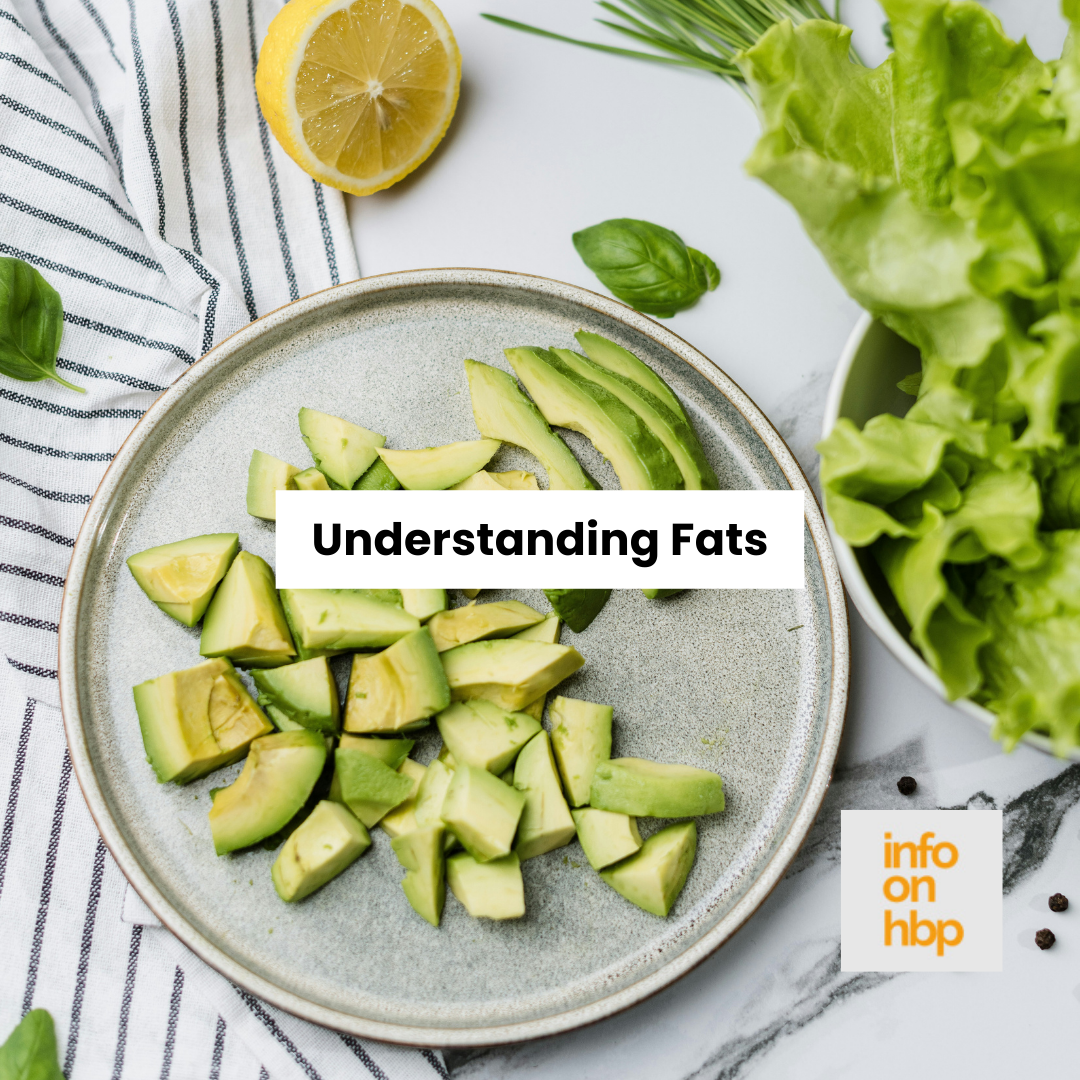
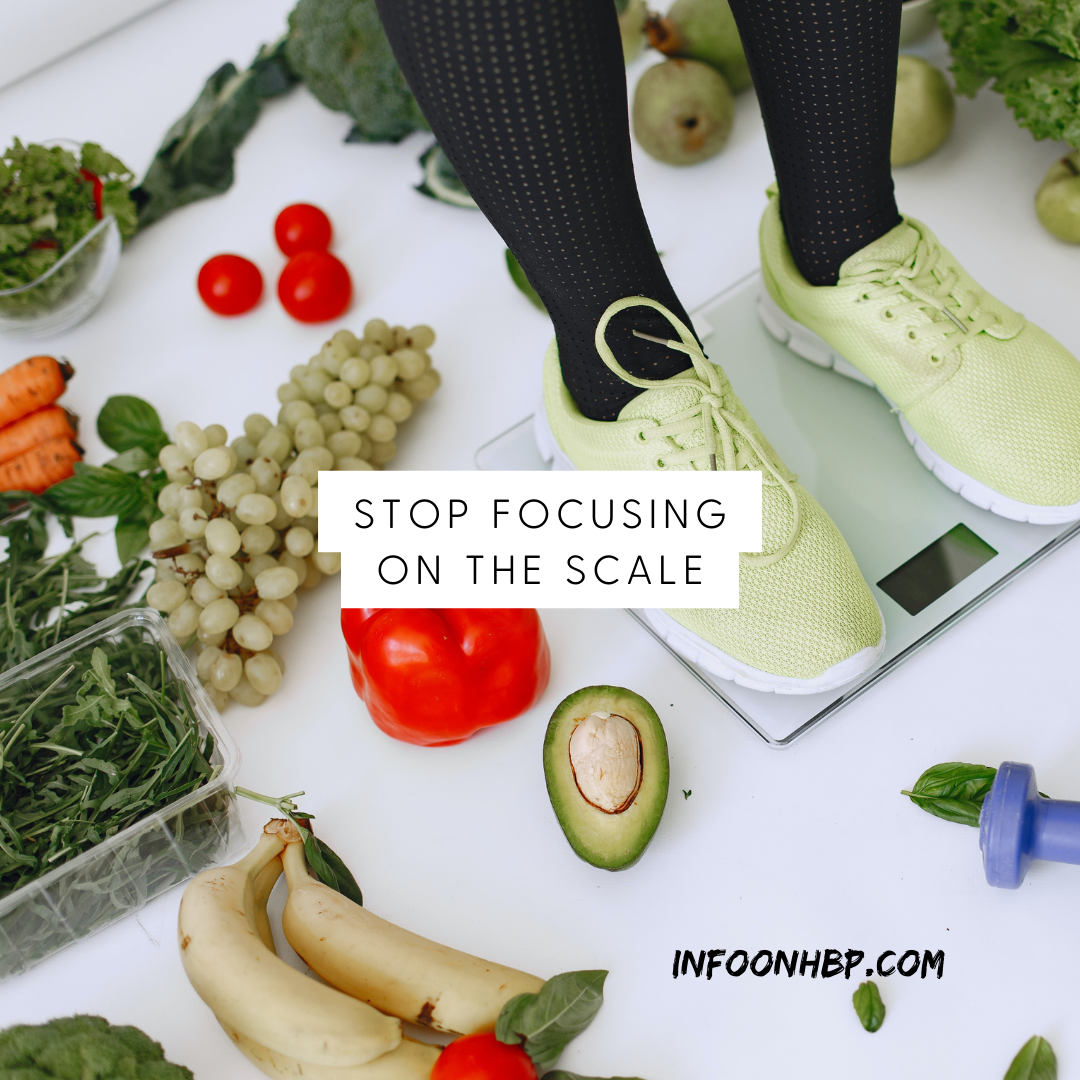
As a bio-individual, you should eat a variety of healthy fats, while consulting with your healthcare practitioner. Heart health includes HDL, LDL, total cholesterol, and triglyceride count, but it’s important to speak with your healthcare practitioner about your specific needs.
For example, you may be genetically predisposed to high blood pressure. Plus, the way your body metabolizes fat is impacted by other bodily systems. However, you would likely benefit from adding some omega-3s on a weekly basis. You can also reduce your intake of inflammatory oils found in processed foods.
Overcome High Blood Pressure And Eat Your Way To A Healthier Heart in 6 Weeks!
Here's how you can find your healthy balance that is possible with "Flavorful Healing: A 6-Week Journey to Overcome High Blood Pressure Naturally". It's a unique course designed specifically for women of color who are ready to take control of their heart health without giving up the joy of food.
Click this link to join us to not just lower your blood pressure naturally, but to revitalize your life, one delicious bite at a loss.
Thank you for being here at High Blood Pressure Wellness Lifestyle Podcast and listening to today's podcast episode on ‘Decoding Diet Myths: Making Sense of Health Hypes”.
Do take a moment to subscribe and share with family and friends. See you next week!
Return from Decoding Diet Myths to High Blood Pressure Diet

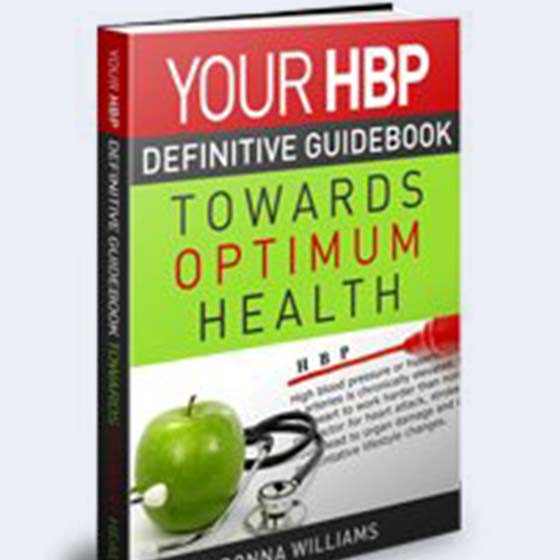


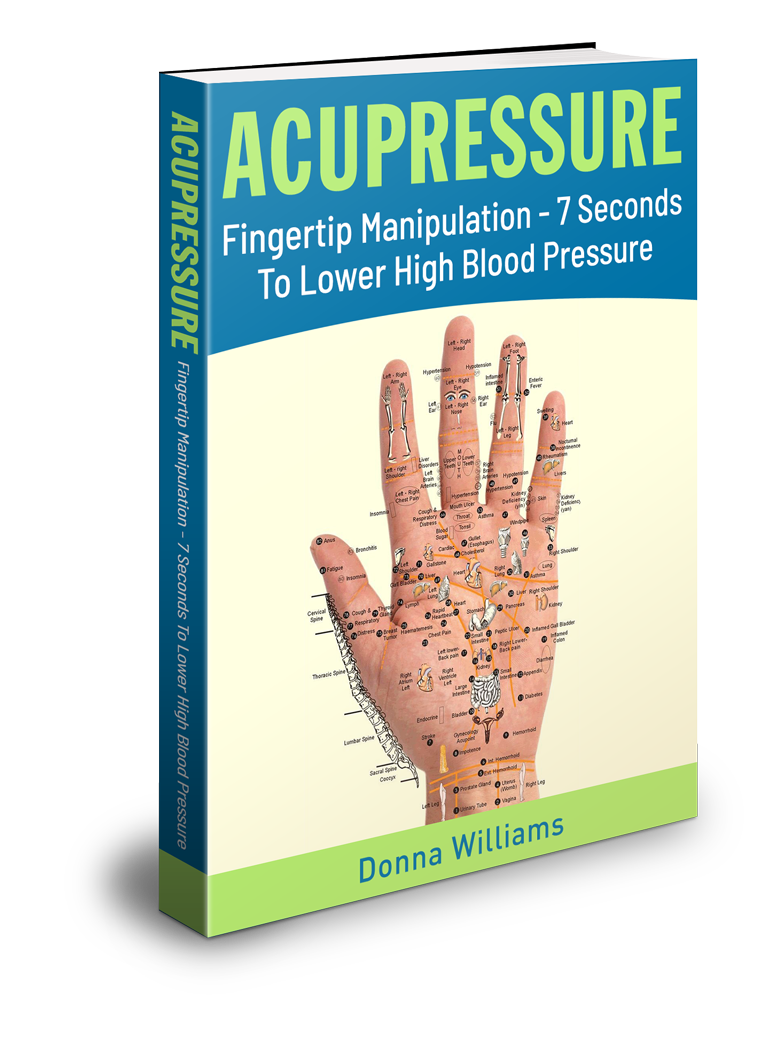
New! Comments
Have your say about what you just read! Leave me a comment in the box below.